Updated 7 months ago
A List of the Best U.S. National Parks Statistics You Need to Know (2025)
Written by
Catherine Lane
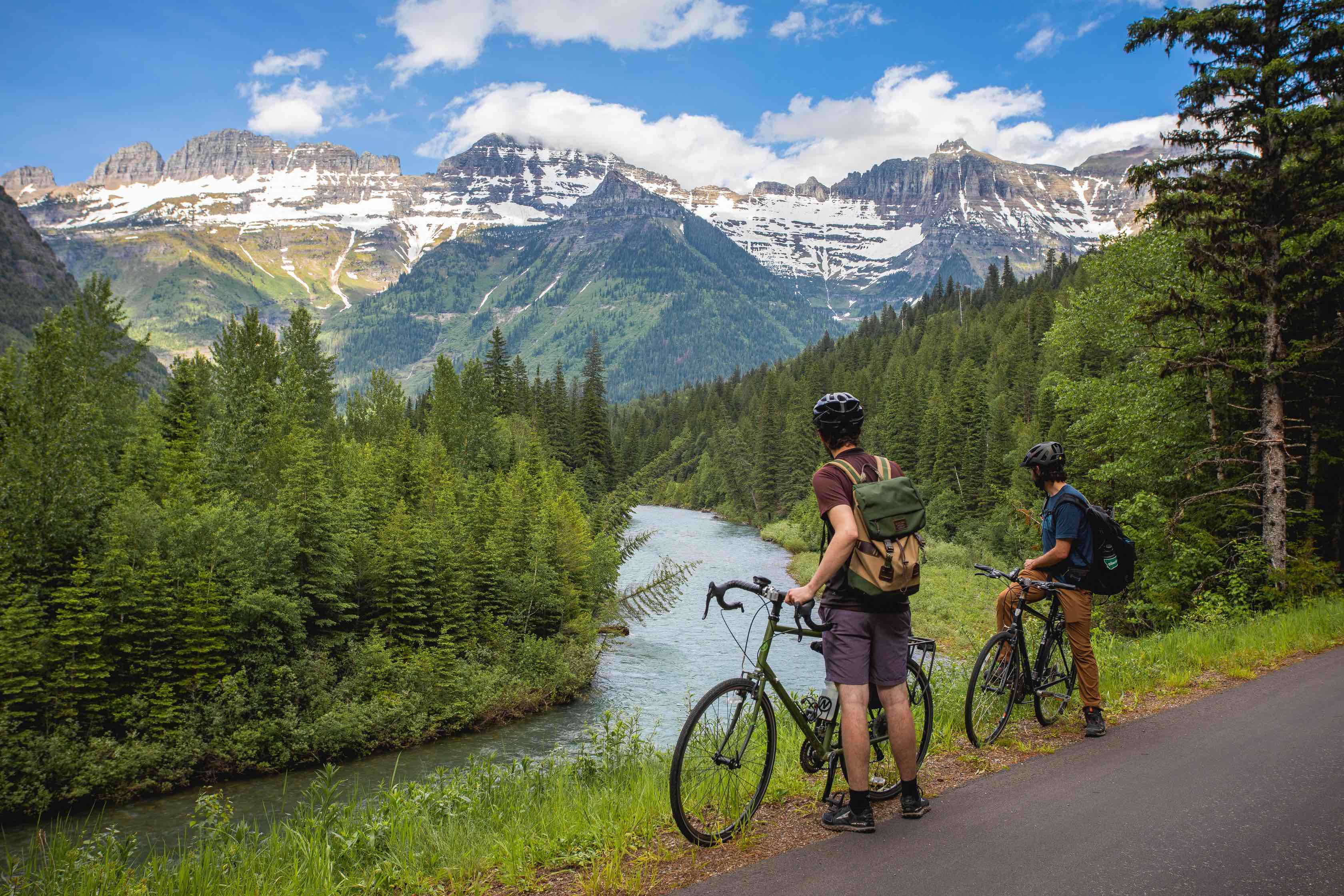
The U.S. National Parks have been a long standing beacon of hope and restoration for millions each year. With over 94,000,000 recreational visitors in 2024, the national parks provide an unparalleled opportunity to experience and preserve the beauty our nation has to offer.
To put that into perspective, there are over 340 million people in the United States. That means that over 27% of the population took part in visiting a national park in 2024.
U.S. National Park Statistics at a Glance
National parks have been at the forefront of minds as the current presidential administration seeks to cut park service resources, despite them being the most favorably viewed federal agency. Here are some key statistics about the U.S. National Parks:
There are 63 national parks and preserves spanning the U.S. and its extended territories.
Almost 43% of the national parks are busiest during the month of July.
January is the least busy month to visit a national park.
The summer months of June, July, and August account for over 40% of the national parks' annual visitors.
The Great Smoky Mountains, Zion, and the Grand Canyon are the most popular parks to visit.
How many national parks are in the United States?
With 63 national parks and preserves spanning the U.S. and extended territories, there are plenty of places to explore.
Thirty of the 50 states in the U.S. have a national park within their borders, including some with more than one. California ranks #1 for the most national parks, with nine, just ahead of Alaska, which has eight national parks.
List of national parks (by state)
State | Number of Parks | Parks |
|---|---|---|
Alaska | 8 | Denali National Park and Preserve Gates of the Arctic National Park and Preserve Glacier Bay National Park and Preserve Katmai National Park and Preserve Kenai Fjords National Park Kobuk Valley National Park Lake Clark National Park and Preserve Wrangell - St Elias National Park and Preserve |
Arizona | 3 | Grand Canyon National Park Petrified Forest National Park Saguaro National Park |
Arkansas | 1 | Hot Spring National Park |
California | 9 | Channel Islands National Park Death Valley National Park Joshua Tree National Park Lassen Volcanic National Park Pinnacles National Park Redwood National Park Sequoia National Park Kings Canyon National Park Yosemite National Park |
Colorado | 4 | Black Canyon Of The Gunnison National Park Great Sand Dunes National Park and Preserve Mesa Verde National Park Rocky Mountain National Park |
Florida | 3 | Biscayne National Park Dry Tortugas National Park Everglades National Park |
Hawaii | 2 | Haleakalā National Park, Hawai'i Volcanoes National Park |
Idaho | 1 | Yellowstone National Park |
Indiana | 1 | Indiana Dunes National Park |
Kentucky | 1 | Mammoth Cave National Park |
Maine | 1 | Acadia National Park |
Michigan | 1 | Isle Royale National Park |
Minnesota | 1 | Voyageurs National Park |
Missouri | 1 | Gateway Arch National Park |
Montana | 2 | Glacier National Park Yellowstone National Park |
Nevada | 2 | Death Valley National Park Great Basin National Park |
New Mexico | 2 | Carlsbad Caverns National Park White Sands National Park |
North Carolina | 1 | Great Smoky Mountains National Park |
North Dakota | 1 | Theodore Roosevelt National Park |
Ohio | 1 | Cuyahoga Valley National Park |
Oregon | 1 | Crater Lake National Park |
South Carolina | 1 | Congaree National Park |
South Dakota | 2 | Badlands National Park Wind Cave National Park |
Tennessee | 1 | Great Smoky Mountains National Park |
Texas | 2 | Big Bend National Park, Guadalupe Mountains National Park |
Utah | 5 | Arches National Park Bryce Canyon National Park Canyonlands National Park Capitol Reef National Park Zion National Park |
Virginia | 1 | Shenandoah National Park |
Washington | 3 | Mount Rainier National Park North Cascades National Park Olympic National Park |
West Virginia | 1 | New River Gorge National Park and Preserve |
Wyoming | 2 | Grand Teton National Park Yellowstone National Park |
American Samoa | 1 | National Park of the American Samoa |
Virgin Islands | 1 | Virgin Islands National Park |
*Note: Some parks extend into multiple states
Best U.S. national parks data and trends
Social media is a great way to find inspiration for your next trip, especially if you’re looking for sweeping vistas. There are highly followed, photographed, and tagged natural wonders that can make excellent destinations. Here are the top 10 most followed national parks on Instagram.
1. Yosemite National Park
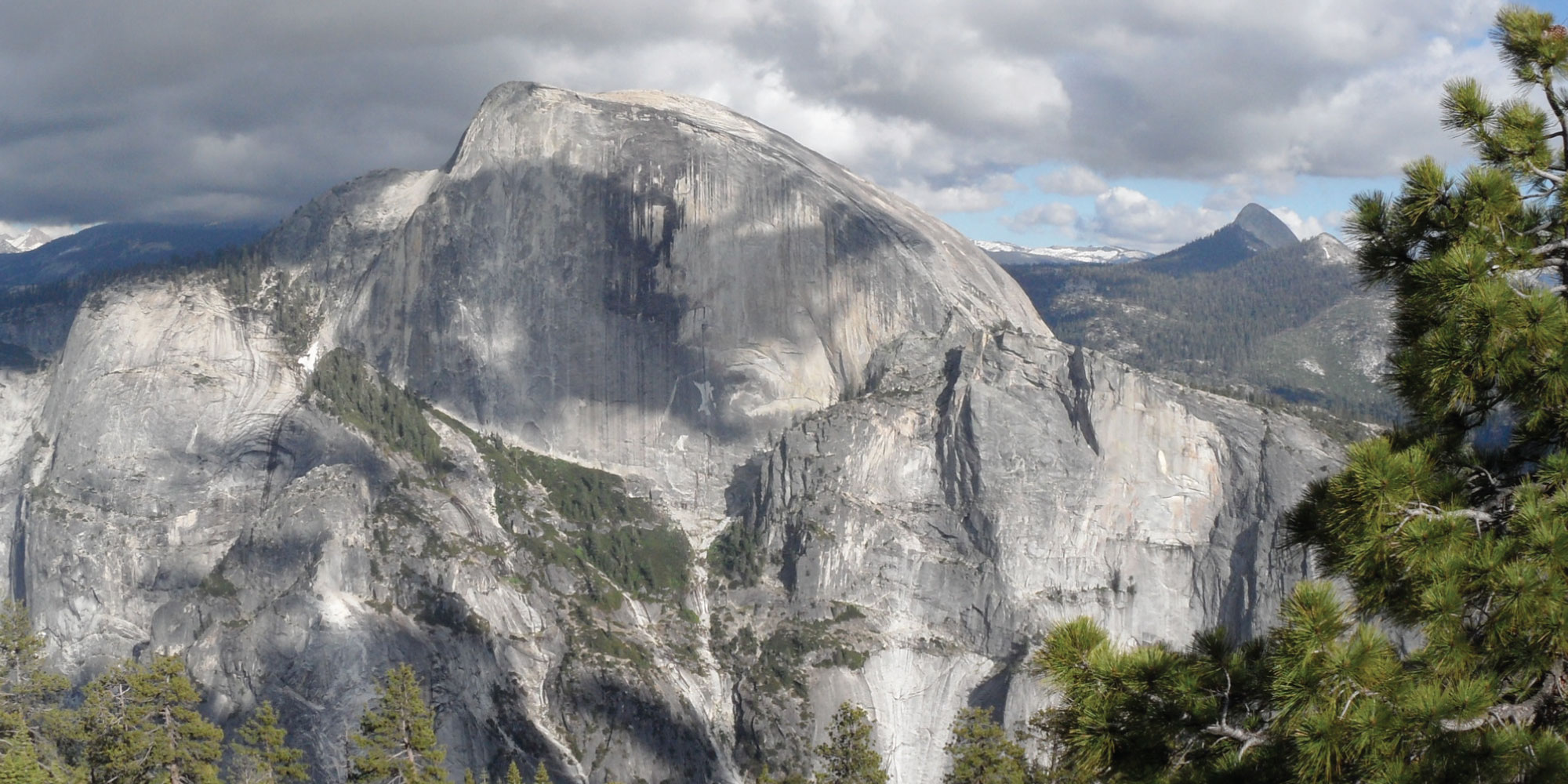
Source: NPS Photo / Don Wood
Instagram followers: 1.9 million
With some of the most iconic views in the country, like El Capitan and Yosemite Falls, it comes as no surprise that Yosemite is one of the most followed national parks. It’s known as one of the top climbing destinations in the country, and there is no shortage of natural beauty. Snag a picture under the towering sequoias or celebrate the accomplishment of completing the Half Dome hike.
2. Yellowstone National Park
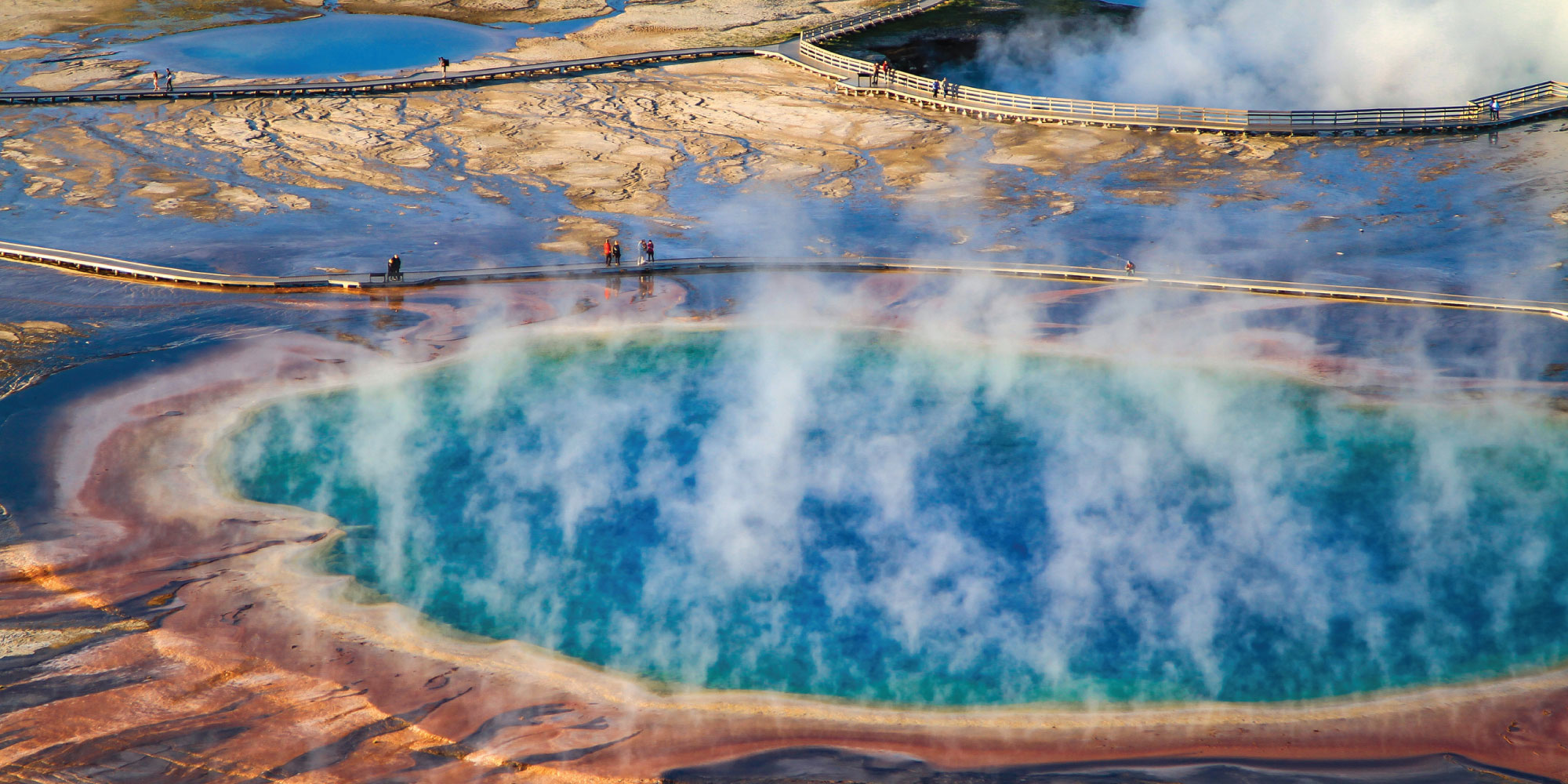
Source: NPS / David Restivo
Instagram followers: 1.4 million
Known as the world’s first national park, visitors can experience some of the country’s most spectacular sites. With more geothermal activity than anywhere else in the U.S., you can take in the beauty of the Old Faithful geyser and the Grand Prismatic hot spring. Yellowstone is also a treasure trove of wildlife, like famous wolf packs and bison.
3. Zion National Park
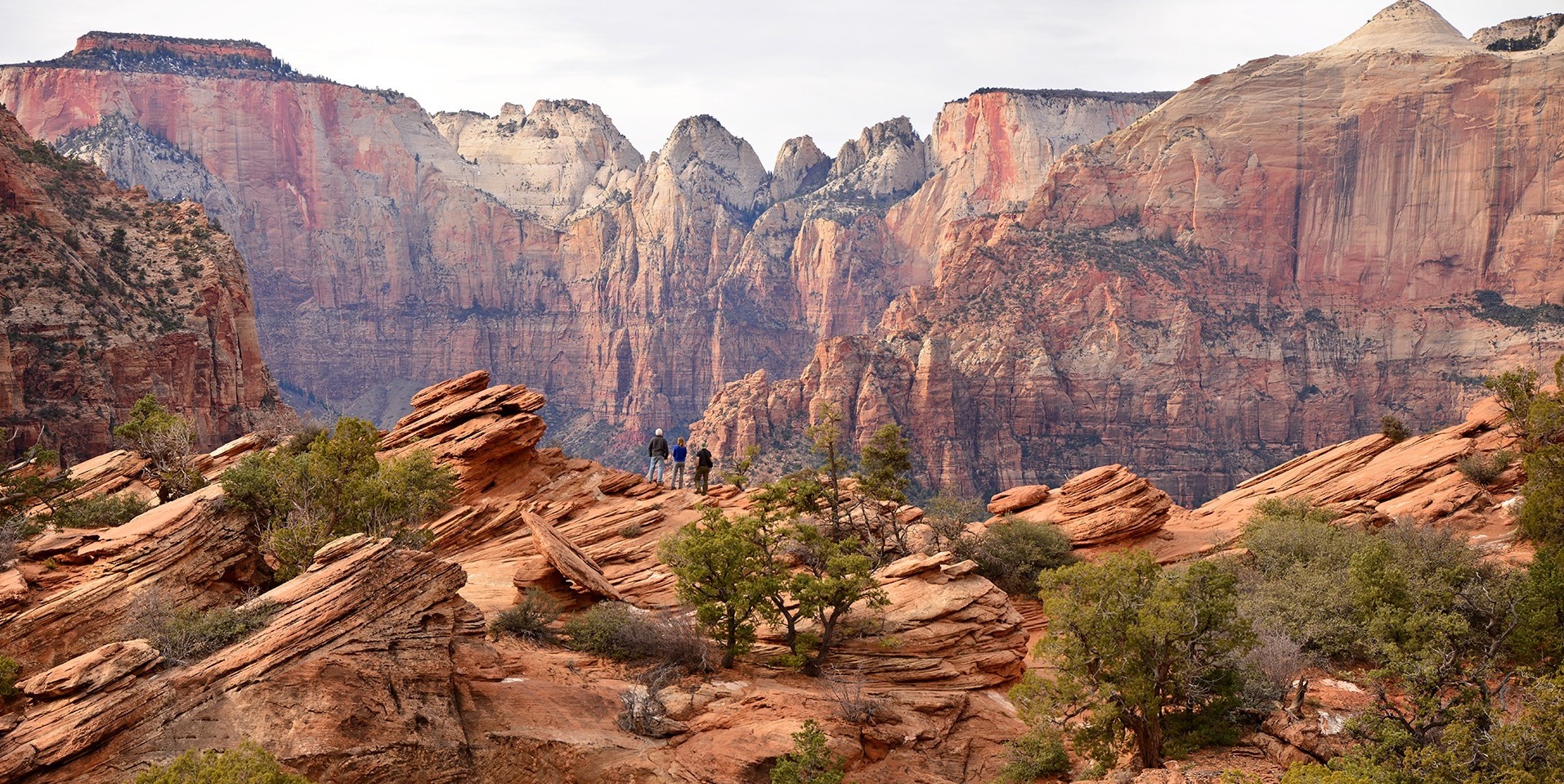
Source: NPS
Instagram followers: 1.0 million
It’s not hard to guess why Zion National Park is one of the most followed parks on Instagram. The park’s biggest attraction is The Narrows, a remarkable area of Zion Canyon, where the red sandstone has been eroded and smoothed by the Virgin River. It’s unlike anything you’ll find in most of the country, and its sights have landed it on many bucket lists.
4. Glacier National Park

Source: NPS / David Restivo
Instagram followers: 935,000
Glacier National Park is quickly becoming a must-see spot for park enthusiasts. Carved from glaciers past, the landscape here is breathtaking. From the top of Mount Cleveland's nearly 10,500-foot peak to the bright blue lakes settled in the valleys, there are picture-worthy sites around every corner. Even the smallest things, like the rainbow-colored rocks at the bottom of Lake McDonald or the gorgeous wildflowers throughout the park, are sure to impress.
5. Grand Canyon National Park
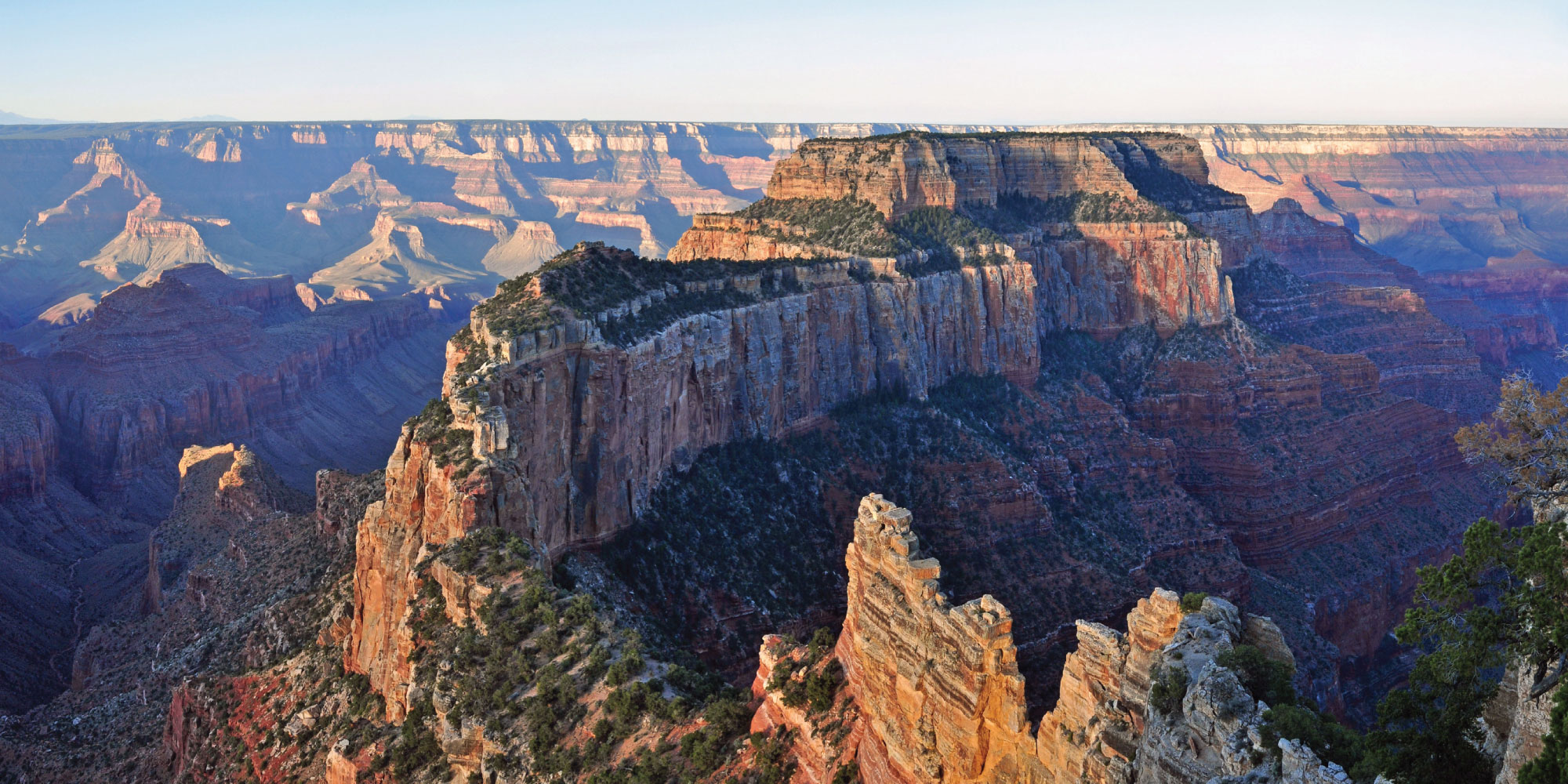
Source: NPS / Michael Quinn
Instagram followers: 866,000
The Grand Canyon is an iconic American landmark, making it a pit stop for people passing through Arizona and a full-blown destination for others. The name isn’t lying — the beauty of the park is nothing short of grand. You can explore the magnitude from the canyon's outer rim or hike your way to the bottom to fully grasp the power of The Colorado River.
6. Grand Teton National Park
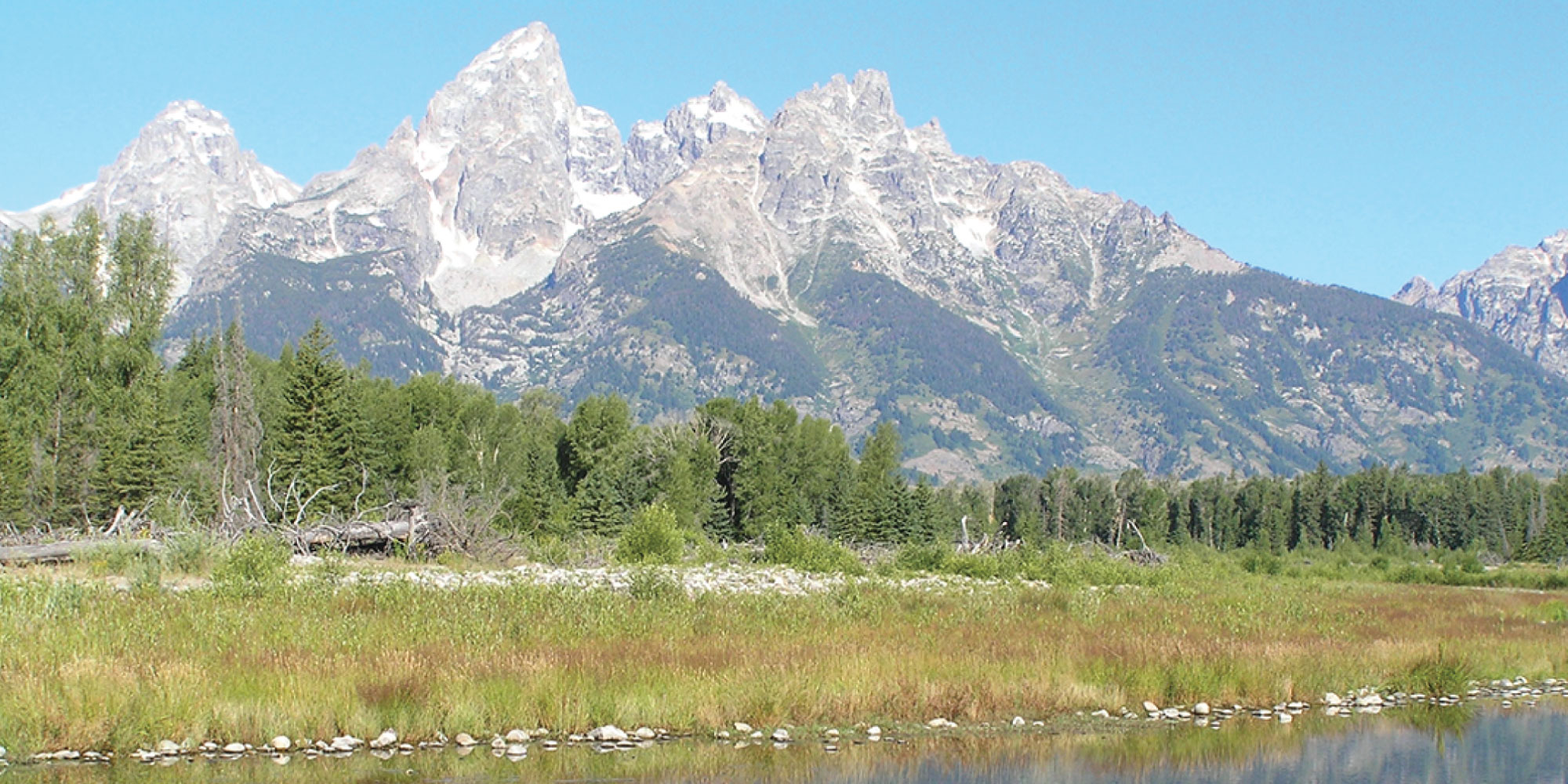
Source: NPS courtesy of Robert J. Lilly
Instagram followers: 762,000
Grand Teton is another top spot for tourists looking for otherworldly views. Snow-capped mountains, the stunning 13,775-foot Grand Teton peak, and grazing buffalo are among the park's most photographed features. Located just 50 miles from Yellowstone, you can experience similar impressive sites with smaller crowds.
7. Rocky Mountain National Park
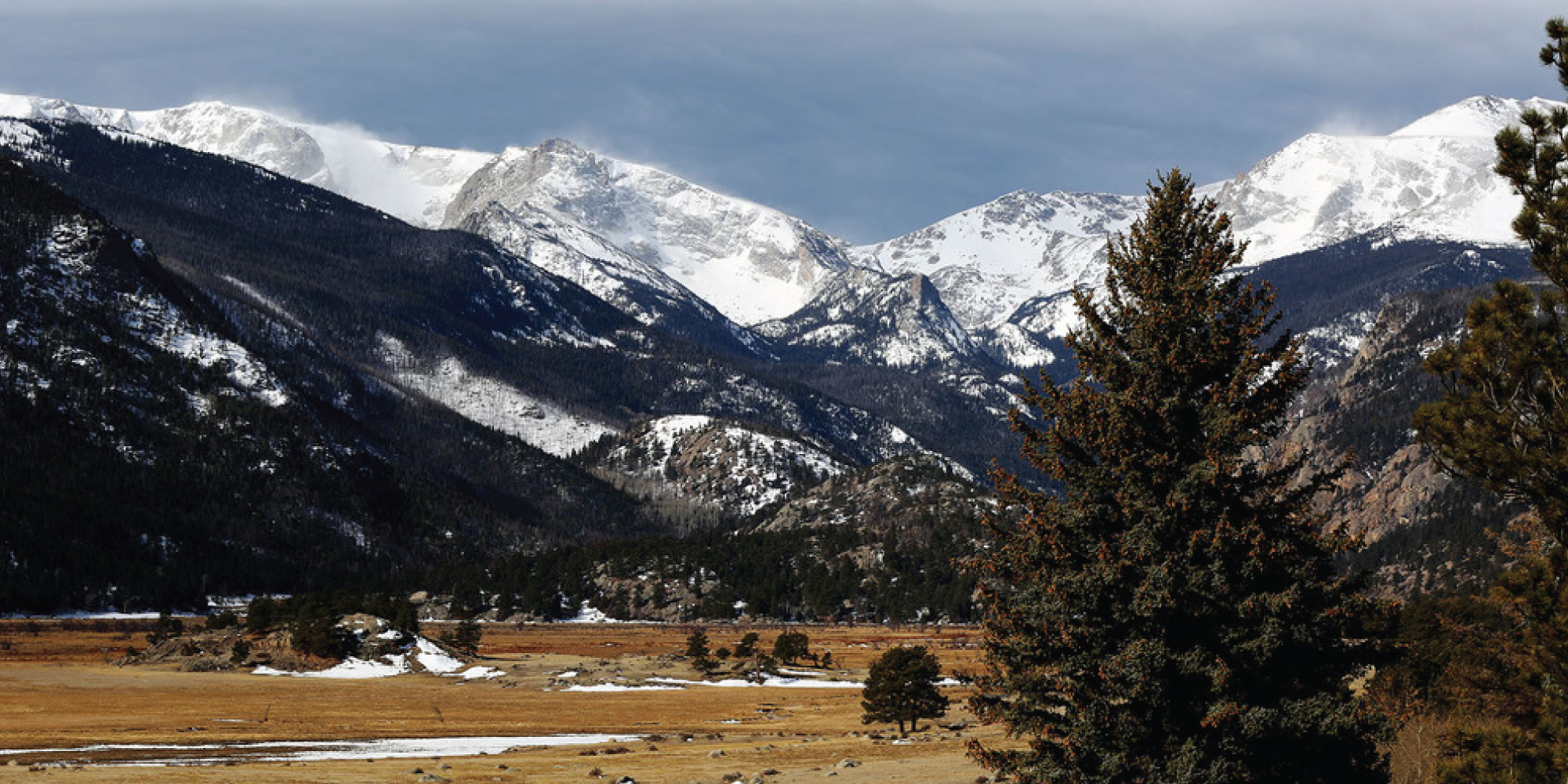
Source: Photo by Mackenzie Reed
Instagram followers: 693,000
Located 35 miles outside of Fort Collins, Colorado, Rocky Mountain National Park gives visitors a chance to see the Continental Divide, the alpine tundra, and a vast forest of aspen trees. The park has both hiking trails and scenic drives, so you can choose how you want to take in the Rockies. If you opt to drive through, keep an eye on the road for crossing bull moose and elk!
8. Great Smoky Mountains National Park

Source: NPS
Instagram followers: 620,000
As one of the few national parks in the eastern portion of the United States, the Great Smoky Mountains is a spectacular place for people on that side of the country to experience a national park. If you’re looking for something truly inspiring, plan your visit for the fall and see the foliage from the Chimney Tops trail.
9. Joshua Tree National Park
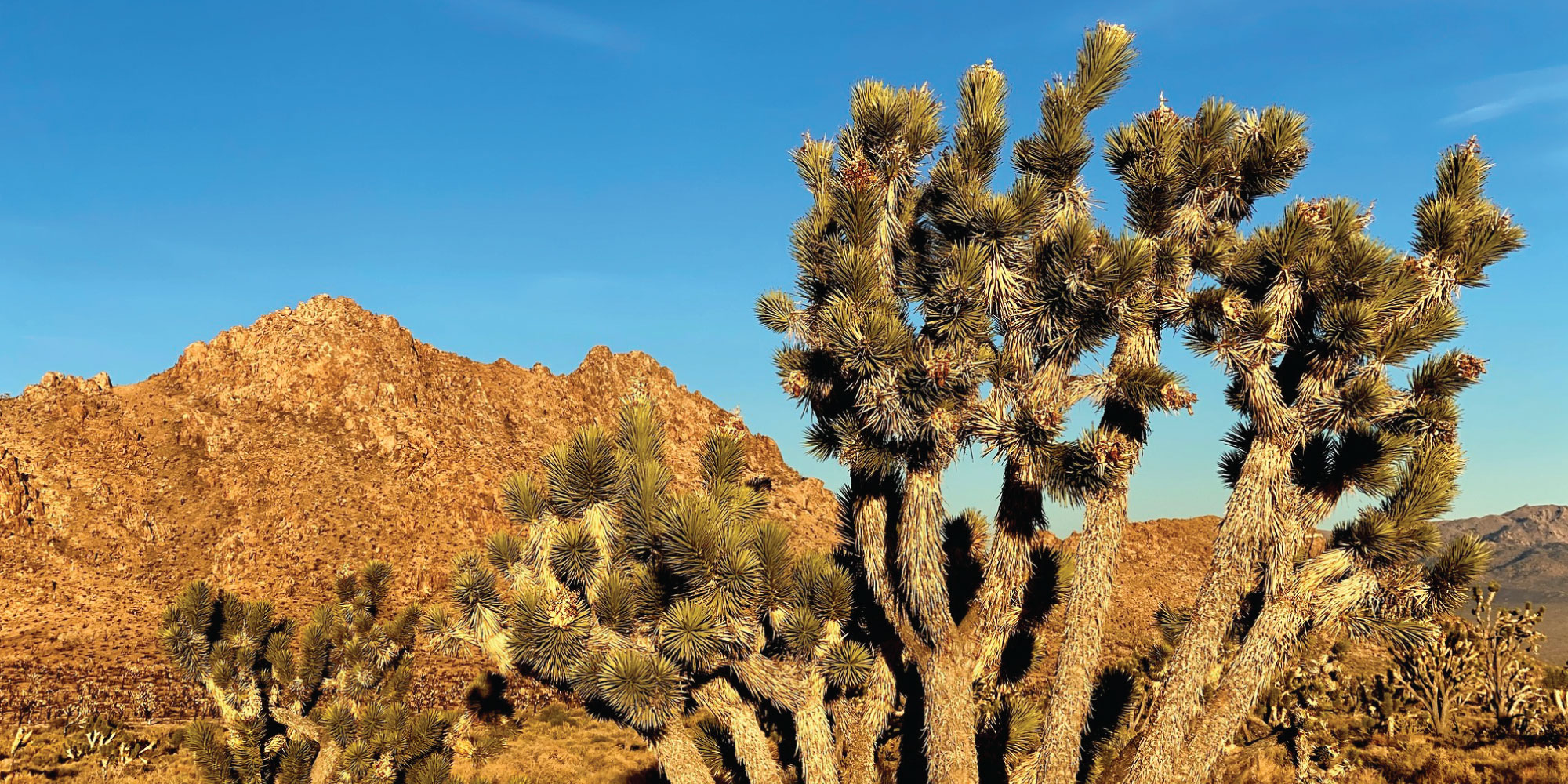
Source: NPS
Instagram followers: 532,000
Joshua Tree National Park is unlike any other park on this list. The desert landscape has an almost Martian feel, and the Joshua trees and teddy bear cholla cacti truly make you feel like the main character in a sci-fi film. There are a number of unique hikes, like the Desert Queen Mine Trail, which allows you to experience the Mojave’s mining history, and the Fortynine Palms Oasis trail, which spits you out in a literal oasis complete with palm trees and a spring.
10. Mount Rainier National Park
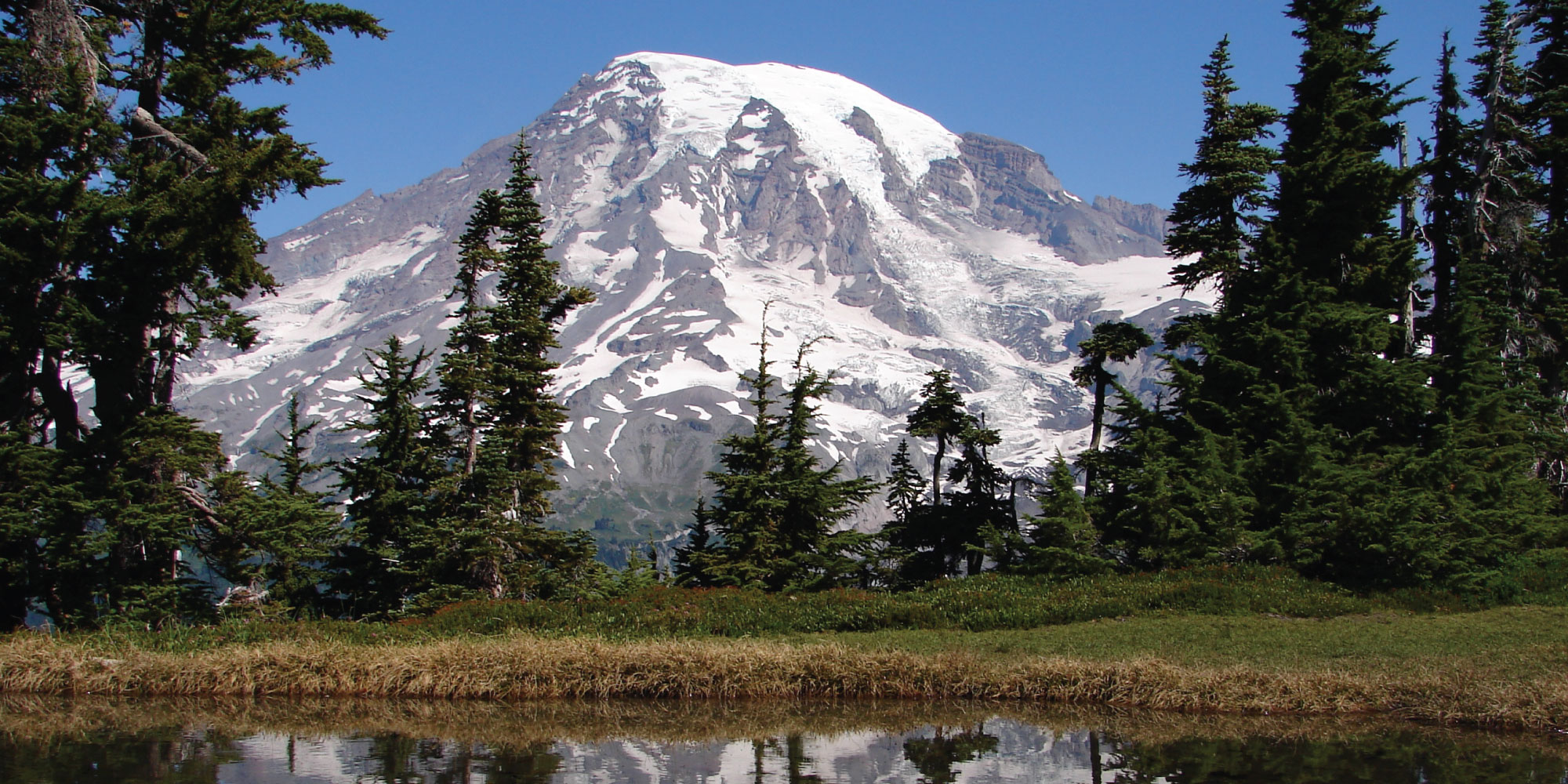
Source: NPS Photo
Instagram followers: 431,000
Mount Rainier National Park is just about as beautiful as it gets. Visitors frequently capture photos of Mount Rainier itself, an active volcano that last erupted roughly 500 years ago. You can see how the volcanic activity shaped the surrounding landscape, enjoy subalpine wildflower meadows, and see animals like the rare American marten, mountain goats, and bobcats.
National park visitation trends and statistics
According to data from the National Parks Service, over 90 million people visit the U.S. National Parks for recreation each year. Between 2019 and 2023, the number of annual visitors fluctuated largely due to COVID-19 and natural weather conditions.
In 2024, the total number of recreational visitors to the national parks was 94,287,567, up 2% from the previous year. In fact, some national parks have become so popular that reservation systems are required for entry or for top attractions in peak seasons.

Most visited national parks
Visitation numbers range widely for the national parks with some being visited by millions and others only in the thousands. According to National Park Service records, the most visited national parks in 2024 accounted for 32.83% of all national park recreational attendance.
Park | Location | Annual visitors |
|---|---|---|
Great Smoky Mountains National Park | Gatlinburg, TN | 12,191,834 |
Grand Canyon National Park | Grand Canyon, AZ | 4,919,163 |
Zion National Park | Springdale, UT | 4,946,592 |
Yellowstone National Park | NW Wyoming, WY | 4,744,353 |
Rocky Mountain National Park | Grand Lake, CO | 4,154,349 |
Only about a dozen national parks are east of the Mississippi, making Great Smoky one of the easiest stops for East Coasters checking off their national parks bucket list.
Least visited national parks
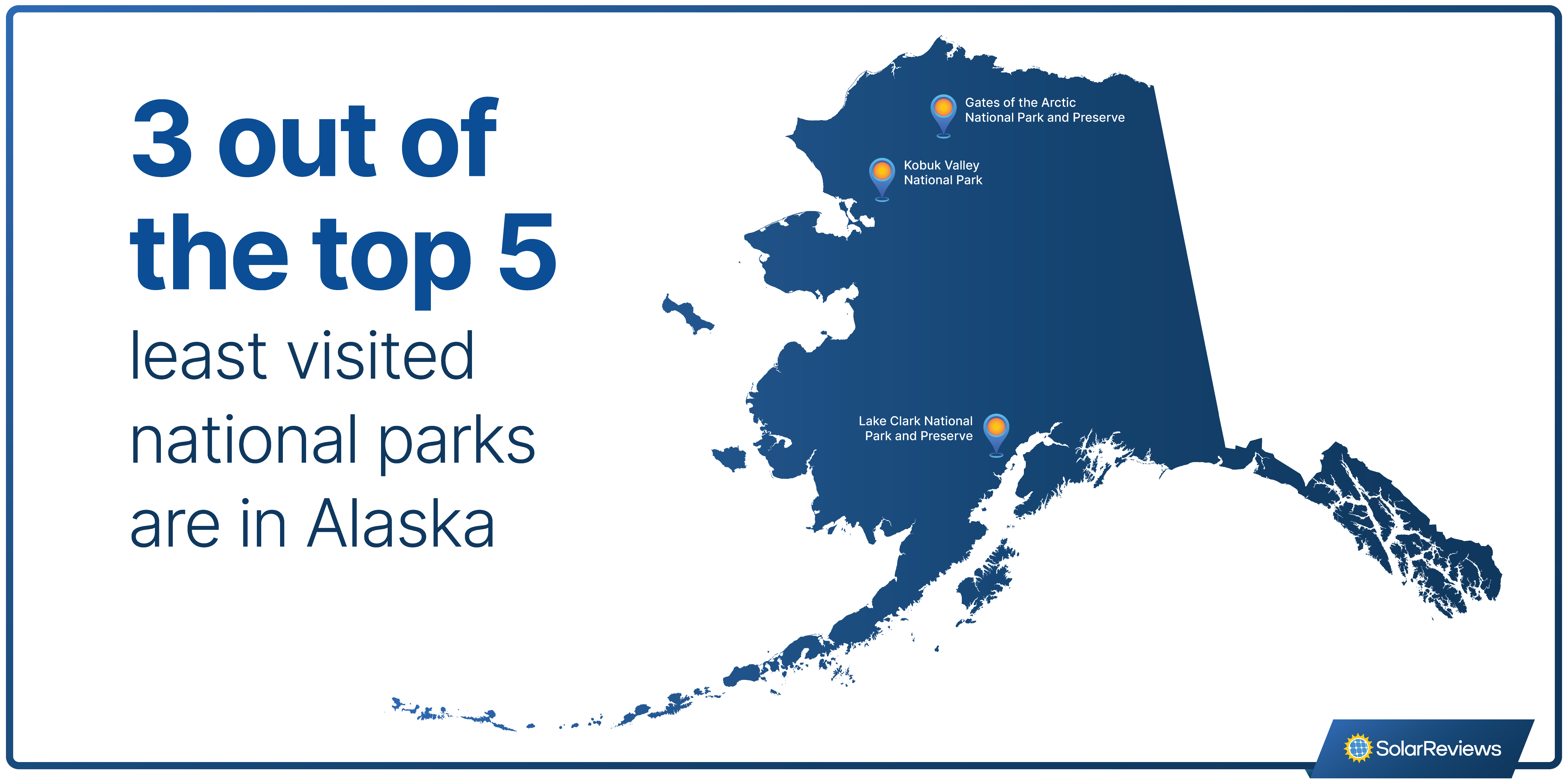
The five least visited national parks accumulated 86,697 recreational visitors in 2024. These five parks were also the least visited in 2022 and 2023.
With parks spanning 32 states and territories, it may come as a surprise that three of the top five least visited parks are in Alaska. But Alaska’s a tricky place to get to, so it’s no wonder its parks don’t have as many visitors.
Park | Location | Annual visitors |
|---|---|---|
Gates of the Arctic National Park and Preserve | Bettles, AK | 11,907 |
National Park of the American Samoa | Pago Pago, AS | 22,567 |
Lake Clark National Park and Preserve | Port Alsworth, AK | 18,505 |
Kobuk Valley National Park | Kotzebue, AK | 17,233 |
North Cascades National Park | Houghton, MI | 16,485 |
After sharp declines during recent years, National Park of the American Samoa saw an 86% increase in recreational visitors over the past year. Visitation numbers likely fell during the COVID-19 pandemic and are now starting to recover.
Best time to visit the national parks
A majority of the national parks have busy seasons, with only a few being crowded all year round. Many factors affect these trends, including:
Geographical location
Weather
Seasonal closures
Sightseeing opportunities
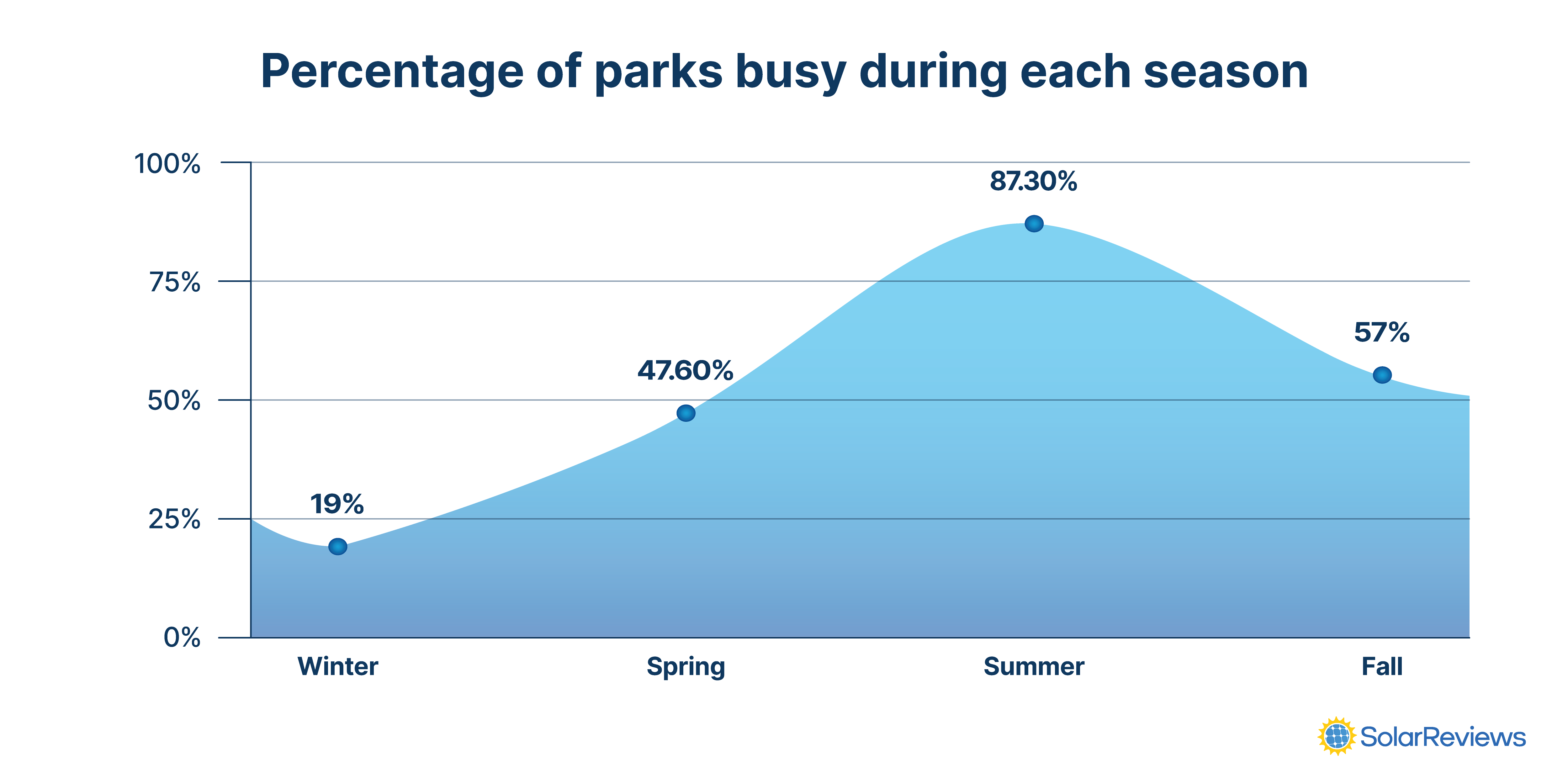
You may want to consider visiting the parks at the beginning or end of the busy seasons to make the most of your trip. This allows you the best opportunity to experience the natural wonders while minimizing the crowds.
Here is a breakdown of the number of recreational visitors for each national park during each month of the year.
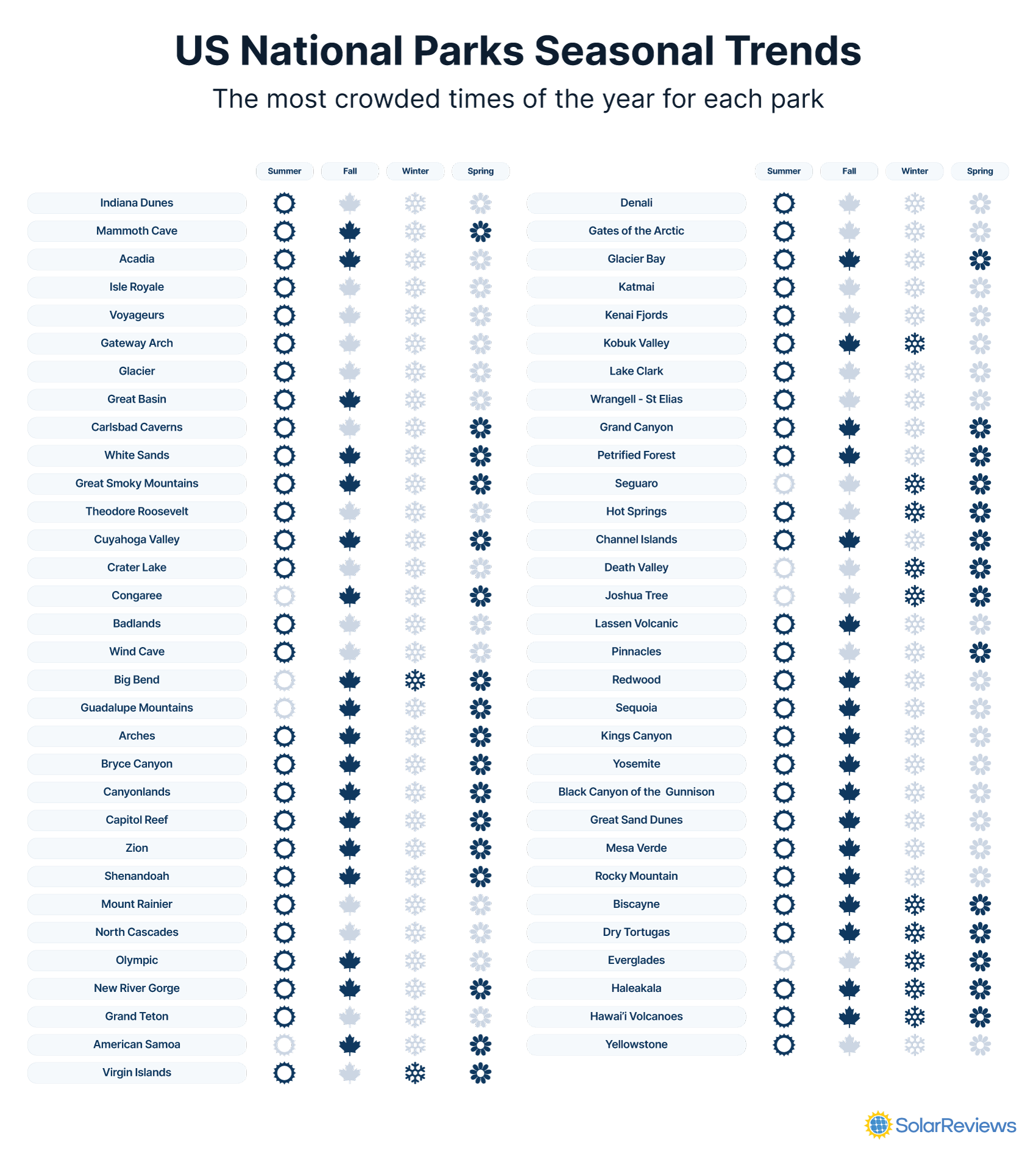
Top considerations for planning your trip
There are many things to consider when planning any trip, but there are even more when it comes to the great outdoors.
Weather
A majority of the parks are open all year round, with just six having limitations or seasonal closings. The weather can be extremely unpredictable from day to day and sometimes even hour to hour. Hurricanes, wildfires, flash floods, and earthquakes are just some examples of natural disasters that can affect closures. In order to prepare ahead of time, these are our recommendations:
Check the forecast: Check the weather and park information before your travel.
Look at historical weather information: Is it the rainy season? Are they prone to drought when you’re visiting?
Be ready for anything: Have backup plans in case the weather doesn’t cooperate or an emergency closure throws a wrench in your plans.
Safety
National parks are meant to preserve nature’s beauty and ecosystem. While this makes for excellent views and fun hikes, it’s not all fun and games. Parks can be dangerous, especially if you’re not an experienced outdoorsperson. Safety should be your top priority in the parks — here are some tips to make your trip go as smoothly as possible.
Alerts: The National Parks Service website provides current alerts and daily updates for each park.
Regulations: Some hikes, attractions, and sites require a permit. Make sure you have all the necessary documentation before you arrive at your destination.
Where to find help: Park rangers are your first source of help while in the parks. Take note of the locations of ranger stations before you embark on a hike.
Understand your limits: Listen, we all know the views at the top of the tallest mountains are the best. But that doesn’t mean you should enter your “Free Solo” era. Don’t attempt hikes or attractions that are beyond your physical limits, and be prepared with walking sticks, water, and anything else that might make your time in the parks more comfortable.
Communication and availability
Nature is the perfect place to “get away from it all.” While this is often the goal when going to a national park, it’s important to realize that there may be times when you won’t have cell service. Most parks emphasize that cell service is limited, and some have no cell service at all.
Public Wi-Fi is available at just over half the parks, mostly limited to areas such as Guest Services. That’s why it’s important to check in with family or friends at the start and end of your day to ensure your safety. If you won’t have the cell service to do so, make sure that you have a designated “safety person” who knows your plans, including things like what trails you’ll be on, where you’re camping, and when you expect to be back in service range.
You should also consider having a paper map of the park in case you don’t have service or if your cell phone dies. You can always bring a portable solar phone charger to easily charge your phone with sunlight no matter where you are, but a physical map is handy and easy to bring along as well.
Transportation accommodations
Many visitors travel by vehicle and opt for overnight access to experience the parks after dark.
Vehicle access
There may be some restrictions on the vehicles you can use at the parks. Believe it or not, not all parks have RV access. Many do, but there may be restrictions or requirements.
Other parks have shuttles to help reduce traffic within the parks. Zion even uses zero-emission buses for its shuttle services!
Most of the parks have drive-through access for personal vehicles, but you won’t truly experience the park through your car windows. You’ll want to get outside to make the most of your trip.
Designated camping access
Some national parks have in-park accommodations, like the stunning Old Faithful Lodge in Yellowstone. Often, though, if you want to sleep in the national parks, that means camping.
Aside from all the standard camping gear, like a sleeping bag, tents, and somewhere to lock up and keep food away from wildlife, you may be considering how to power your devices or your RV when you’re in the park.
Many like the convenience of a generator when camping and many national parks allow them. However, some require a permit before you can use one. You can also choose a solar generator, which can be charged before you get to the park, and continue to charge it with portable solar panels. No noise, no fuel, no problem!
Here are some of our top picks for the best solar generators:
National park sustainability efforts and conservation programs
National parks were created to protect America’s greatest ecological wonders and allow people to enjoy them. While land preservation is a key effort in keeping our planet healthy, even national parks have an environmental impact.
According to data from the National Park Service, 183 million kilowatt-hours of electricity are consumed by park service buildings annually. To put that in perspective, the average American home uses about 11,000 kilowatt-hours per year. About 80 million pounds of solid waste are generated in the parks, and close to 4 million gallons of fuel are used by NPS vehicles.
These are significant numbers and are a main driver for the development of the Green Parks Plan, which establishes programs to make the National Parks Service more sustainable. A number of other initiatives are in place to help reduce park waste and greenhouse gas emissions and work toward a cleaner future.
Climate Friendly Parks Program
The Climate Friendly Parks Program provides resources and support to help parks address the environmental impacts of climate change. Participating parks measure their emissions, educate employees and visitors about climate change, and develop strategies to make operations and facilities more sustainable.
To join the program, parks must meet four milestones: an application, a GreenHouse Gas inventory, a workshop, and an action plan. Currently, there are over 140 member parks, from popular parks like Zion to smaller ones like the Delaware Water Gap National Recreation Area.
Reducing Energy program
The National Parks Foundation is the official nonprofit partner of the National Park Service. The Foundation offers a variety of park programs to help make the parks the best that they can be, from making destinations more accessible to all Americans to providing support for future and current NPS employees.
One such program is the Reducing Energy program. National parks are estimated to release the same amount of greenhouse gas emissions as 20,000 American homes. The program aims to help parks invest in renewable energy and energy efficiency upgrades for buildings, transition to electric vehicle fleets, and education surrounding energy usage.
The program has already completed projects such as solar panel installations at ranger stations and visitor centers and electric and zero-emission vehicle transitions.
Renewing our National Parks partnership
The Department of Energy’s Federal Energy Management Program partnered with the National Parks Service to help deploy renewable energy projects across the national parks. Many of these projects were installed decades ago, with some of the oldest completed in 1994.
Notable installations include an 18 kW solar panel installation at Yellowstone’s Bechler Ranger Station, a 42 kW solar plus storage system at the Hole-in-the-Wall Visitor Center at Mojave National Preserve, and a solar hot water system at comfort stations throughout Chickasaw National Recreation Area in Oklahoma.
Ways you can help the parks
1. Volunteer and advocacy work
Volunteering is the most direct way to be involved with the National Park Service. Many parks and national recreation areas have volunteer opportunities, including being a park educator, maintaining trails and buildings, or working in park libraries and archives to preserve history.
You may not even realize that there are National Park Service opportunities near you. National recreation areas and monuments are scattered throughout the country and are excellent places to connect with your community.
If there aren’t any parks nearby, there are still plenty of opportunities to help. There are virtual opportunities you may be eligible for either directly through the NPS or organizations like the National Park Foundation. You can also use the parks as creative inspiration for artwork or other advocacy campaigns that preserve the history and story of the parks.
2. Pack it in, pack it out
You want a national park to leave an impact on you — not the other way around. Be mindful of your surroundings, and don’t leave trash behind. And if you notice litter that’s not your own, take it with you, too! Even the smallest action on your part plays a vital role in preserving and protecting.
Also, be sure to recycle when you can. Park visitors generate a significant amount of waste, so any amount that can be recycled is beneficial and can help the parks meet their climate-friendly goals.
3. Switching to clean and efficient alternatives in your everyday life
Not all of us are within driving distance of a National Park or have the time to spend hours volunteering. Believe it or not, there are habits and upgrades you can make in your daily life that will benefit national parks and your local environment!
We can all use less energy, not just from an environmental perspective but also from a financial one. Upgrading to energy-efficient appliances and practicing energy conservation habits can greatly reduce electricity use and lower one's carbon footprint.
To really make a dent, you can switch to an electric vehicle or install solar panels on your roof. Solar panels generate completely clean energy, meaning you’ll automatically reduce your greenhouse gas emissions. Switching to renewable energy sources like solar is better for the planet and the parks!
Catherine has been researching and reporting on the solar industry for five years and is the Written Content Manager at SolarReviews. She leads a dynamic team in producing informative and engaging content on residential solar to help homeowners make informed decisions about investing in solar panels. Catherine’s expertise has garnered attention from leading industry publications, with her work being featured in Solar Today Magazine and Solar ...
Learn more about Catherine Lane